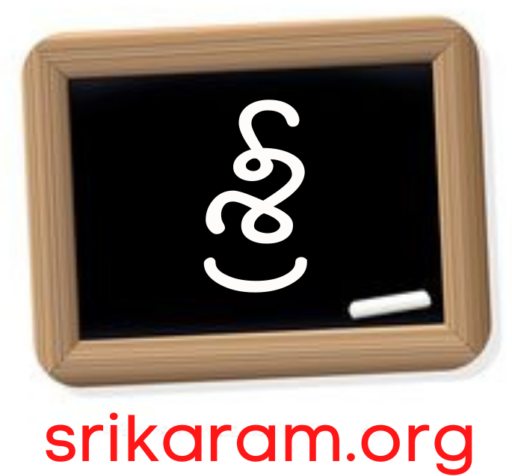The Ramayana is one of the two great Indian epics, composed by the sage Valmiki in Sanskrit. It narrates the life and adventures of Lord Rama, the prince of Ayodhya, who is considered the seventh incarnation of Lord Vishnu. The epic is a blend of divine myth, spiritual symbolism, and moral lessons, comprising seven books (kandas) and around 24,000 verses.
Key Characters
- Rama: The hero of the epic, eldest son of King Dasharatha, embodiment of virtue.
- Sita: Rama’s devoted wife, considered an incarnation of Goddess Lakshmi.
- Lakshmana: Rama’s loyal brother, accompanies him into exile.
- Hanuman: Devotee of Rama, a divine monkey with immense strength and wisdom.
- Ravana: The ten-headed demon king of Lanka, antagonist of the epic.
- Dasharatha: King of Ayodhya and father of Rama.
- Kaikeyi: Dasharatha’s queen who demands Rama’s exile.
- Bharata: Rama’s younger brother, who rules Ayodhya in his absence but refuses the throne.
Bala Kanda (Book of Childhood)
The Ramayana begins in the city of Ayodhya, ruled by King Dasharatha. He has three queens – Kaushalya, Kaikeyi, and Sumitra – and four sons: Rama, Bharata, Lakshmana, and Shatrughna. Rama is the ideal prince—brave, wise, and virtuous. He wins Sita’s hand in marriage by stringing and breaking Lord Shiva’s divine bow in a swayamvara.
As Dasharatha prepares to crown Rama as king, Queen Kaikeyi reminds him of two boons he had promised her. She demands that Rama be exiled for 14 years and her son Bharata be crowned instead. Bound by dharma (duty), Dasharatha agrees. Rama, with Sita and Lakshmana, leaves for the forest.
Ayodhya Kanda (Book of Ayodhya)
The people of Ayodhya are heartbroken at Rama’s exile. King Dasharatha dies of grief. Bharata, upon learning what happened, is devastated. He refuses to accept the throne and instead goes to the forest to bring Rama back. Rama, however, insists on fulfilling his father’s word and remains in exile. Bharata places Rama’s sandals on the throne and rules Ayodhya as his brother’s representative, awaiting his return.
Aranya Kanda (Book of the Forest)
During their forest exile, Rama, Sita, and Lakshmana encounter sages, demons, and magical beings. One day, the demoness Shurpanakha tries to seduce Rama and attacks Sita. Lakshmana cuts off her nose. Furious, she runs to her brother Ravana, the mighty king of Lanka.
Ravana devises a plan to abduct Sita. He sends Maricha, a demon in the form of a golden deer, to distract Rama. As Rama chases it, Sita is kidnapped by Ravana and taken to Lanka. Rama and Lakshmana begin the search for Sita, wandering deep forests and mountains.
Kishkindha Kanda (Book of Kishkindha)
Rama meets Hanuman, a minister to Sugriva, the exiled monkey king. Rama helps Sugriva defeat his brother Vali and regain his throne. In return, Sugriva promises to help find Sita. Hanuman leaps across the ocean to Lanka in search of her. He finds Sita imprisoned in Ashoka Vatika, guarded by demons but unwavering in her devotion to Rama.
Hanuman comforts her, offers Rama’s ring as a token, burns down part of Lanka, and returns to inform Rama of Sita’s whereabouts.
Sundara Kanda (Book of Beauty)
This section primarily focuses on Hanuman’s heroic journey to Lanka. His unwavering devotion to Rama and his superhuman feats demonstrate the power of bhakti (devotion). This book is often read independently for its spiritual strength and uplifting messages.
Yuddha Kanda (Book of War)
Rama builds a bridge to Lanka with the help of the Vanara (monkey) army—this is the famous Rama Setu. A fierce battle ensues. Lakshmana defeats Ravana’s son Indrajit. Rama finally kills Ravana with a divine arrow, symbolizing the triumph of good over evil.
Sita undergoes an Agni Pariksha (test by fire) to prove her chastity. She emerges unharmed, and Rama accepts her back.
They return to Ayodhya on a flying chariot (Pushpaka Vimana). Their return marks the celebration of Diwali, the festival of lights. Rama is crowned king, beginning a golden age of righteous rule (Rama Rajya).
Uttara Kanda (Book of the Aftermath)
Though not part of the original Valmiki Ramayana, this later addition details the aftermath. Rama’s subjects question Sita’s purity. To uphold dharma as a king, Rama reluctantly sends a pregnant Sita to the forest, where she takes refuge in the ashram of sage Valmiki and gives birth to twins, Lava and Kusha.
Years later, the boys unknowingly confront Rama’s army and narrate the Ramayana. Rama is moved, and Sita is called to prove her purity again. Instead, she prays to Mother Earth, who takes her into her lap.
Heartbroken, Rama completes his duties and eventually returns to Vaikuntha, his heavenly abode, ending his earthly life.
Themes and Lessons
- Dharma (Duty): Rama’s unwavering commitment to righteousness, even at great personal loss, teaches the value of fulfilling one’s duty.
- Devotion and Loyalty: Hanuman’s love for Rama, Sita’s loyalty, and Bharata’s devotion highlight the power of faith and love.
- Good vs Evil: The triumph of Rama over Ravana symbolizes the victory of truth and virtue over arrogance and evil.
- Sacrifice: Every main character sacrifices something—Rama his kingdom, Sita her comfort, Lakshmana his peace, Bharata the throne.
- Ideal Relationships: The Ramayana portrays ideals in every role—ideal son (Rama), wife (Sita), brother (Lakshmana, Bharata), and devotee (Hanuman).
Cultural Significance
The Ramayana is not just a story—it is a guide to life. It shapes the moral and spiritual foundation of Indian culture. Its characters are revered, its values followed, and its episodes enacted in Ram Leelas, songs, and dance-dramas across India and Southeast Asia.
Its universal values have found resonance in other countries like Indonesia, Thailand, and Cambodia. In every telling—be it Valmiki’s, Tulsidas’s Ramcharitmanas, or Kamban’s Tamil version—the heart of the epic remains unchanged: a journey of righteousness, love, and divine purpose.
